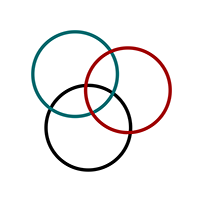Severity of burn injury is determined by the depth of injury, extent of body surface injured, location of burn on the body, age of the patient, pre-burn medical history and circumstances or complicating factors (e.g., smoke inhalation, other traumatic injuries).
![causesofburninjuries[1]](https://understandingburncare.org/wp-content/uploads/causes20of20burn20injuries1.jpg)
Burn Depth: How Deep Is the Burn?
Epidermis –
![firstdegreeburn[1]](https://understandingburncare.org/wp-content/uploads/first20degree20burn1.png)
First Degree (Superficial):
Damage to the skin is limited to the outer layer (epidermis). The skin is intact and typically appears to be pink/red in color, very warm or hot to touch and painful. Swelling and small blisters may be present. A common cause of first degree burns is sunburn.
![firstdegreeburnedhand[1]](https://understandingburncare.org/wp-content/uploads/first20degree20burned20hand1.png)
Epidermis –
Dermis –
![seconddegreeburn[1]](https://understandingburncare.org/wp-content/uploads/second20degree20burn1.png)
Second Degree (Partial-Thickness):
Damage to the skin includes the outer layer and penetrates to the middle layer of tissue (dermis). The wound is typically moist/wet and red; swelling is usually present; there may be blisters or sloughing (loss) of skin; it is very painful.
![seconddegreeburnedhand[1]](https://understandingburncare.org/wp-content/uploads/second20degree20burned20hand1.png)
Epidermis –
Dermis –
Hypodermis –
![thirddegreeburn[1]](https://understandingburncare.org/wp-content/uploads/third20degree20burn1.png)
Third Degree (Full Thickness):
All three layers of the skin (epidermis, dermis, and hypodermis/subcutaneous tissue) are damaged; the injury can include deep penetration into muscles, organs and bones. The affected area is dry, leathery and may present in many colors (e.g., whitish, charred or tan-colored). Due to nerve destruction, full-thickness areas are non-sensate (i.e., have loss of feeling/sensation).
![thirddegreeburnhand[1]](https://understandingburncare.org/wp-content/uploads/third20degree20burn20hand1.png)
Burn Size: How Big Is the Burn?
When managing a burn patient, it is important to estimate the percentage of total body surface area (TBSA) that has been burned. When estimating %TBSA, only partial and full-thickness (second and third-degree) injured areas are included in the estimate.
Two Methods for Evaluating %TBSA:
1) The Rule of 9’s
Estimates the %TBSA burned by dividing the body into regions, each region representing approximately 9% TBSA or multiples of 9%. The genitals represent 1%. To account for their proportionally larger-sized heads, infants and children have a slightly different percentage rating per body region.
![assessingburns-3people[1]](https://understandingburncare.org/wp-content/uploads/assessing20burns-3people1.png)
Anterior
Infant/Child
Posterior
2) The Palmar Method
For scattered or small burn injury areas, the burned patient’s FULL HAND (including fingers) may be used to approximate 1% TBSA, regardless of age. However, its usefulness is isolated to up to 10% TBSA.
